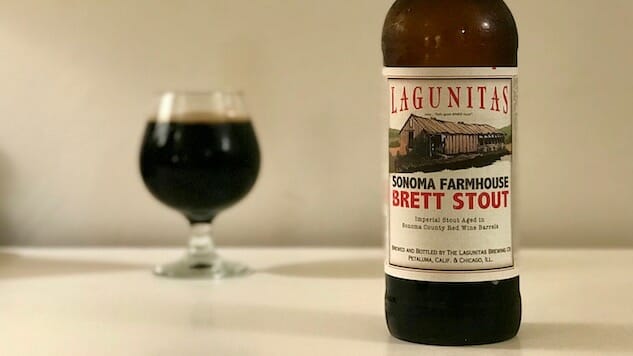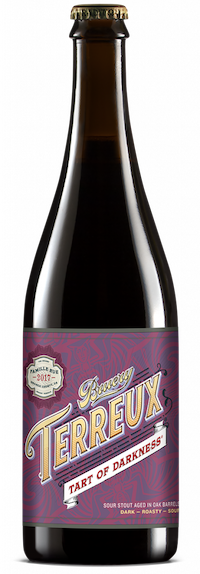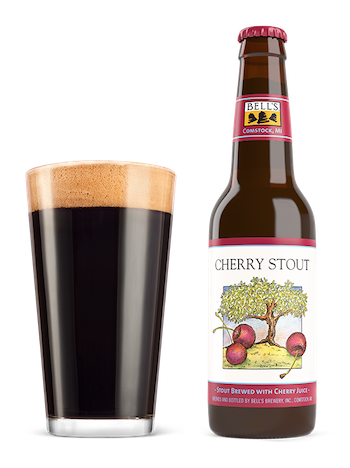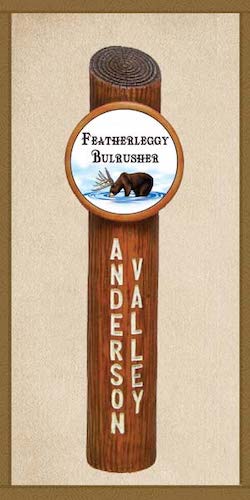Getting Weird with Sour Stouts

There’s a good chance you’ve never had a sour stout, and I can say that with some certainty for a couple of reasons. First, it’s a pretty niche beer style; not everybody makes a sour stout. Second, it just sounds weird, so if you did happen to come across one in the wild, you might pass it over because those two words “sour” and “stout,” don’t sound like they should go together. It’s like a peanut butter and jelly and pickled jalapeno sandwich. It sounds kind of off. But here’s the thing: peanut butter and jelly and pickled jalapeno sandwiches are delicious, and so are sour stouts.
If you want proof, pick up Sonoma Farmhouse Brett Stout from Lagunitas. This is a big ABV (11.3%) imperial stout that’s fermented with Brettanomyces and Lactobacillus before being aged in red wine barrels from Sonoma County. It is a super weird concept that I approached with a healthy dose of skepticism. Lagunitas is always doing weird stuff, but they don’t always blow me away with their weird stuff. But make no mistake: Sonoma Farmhouse Brett Stout is a winner.
The beer pours light black with rosy edges and smells like your kid dropped his chocolate bar in a big “Tami Taylor” sized glass of red wine. That’s pretty much what the beer tastes like, too. The red wine hovers around the edges of the sip, adding acidic notes of cherries and grapes, but the middle of the sip is all soft imperial stout with hints of chocolate. Imagine a Tootsie Pop—fruity candy on the outside, and mellow pseudo chocolate on the inside. That’s what this beer tastes like. There’s some roasted coffee in there somewhere, and the tannins from the barrel takeover the finale of the sip. Is it sour? A little bit. Not in an overpowering sort of way. I’d say it’s more funky that puckering. It’s actually a really balanced experience, which is something you don’t get to say too often when you’re talking about imperial stouts.
And that’s what’s so cool with the sour stout style. It creates balance where you don’t expect it and actually works to lighten up an otherwise heavy beer, extending stout season into spring. If you’re interested in checking out the style, we’ve recommended a few other options below. Some are more sour than others. But they all age well, so don’t worry if the bottle you find is a seasonal from last fall.
Bruery Terreux Tart of Darkness

Probably the most well-known of the sour stout substyle, The Bruery takes a traditional stout and puts it in used oak barrels that were originally used to age the Bruery’s Cuivre and Black Tuesday beers. After that aging, they get some sour bacteria and wild yeast. The end result is definitely sour, but still has plenty of roasted coffee and vanilla notes. It’s a classic. If you really want to get into the sour stout style of beer, start here.


